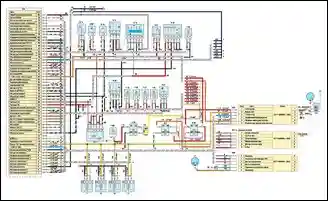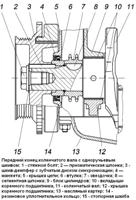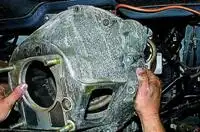Checking electrical circuits
To measure electrical parameters, a digital or analog (pointer) tester is used - a voltmeter, ohmmeter and other devices combined in one housing.
Digital devices have a low inertia, they are insensitive to vibrations and the position of the body during measurements, but the arrows more clearly show the dynamics of changes in the measured parameters.
In addition, the liquid crystal display of digital instruments is sensitive to lighting and temperature changes.
Checking dead circuits
Before work, we calibrate the ohmmeter. At the selected measurement limit (for most circuits up to 200 Ohm), we close the probe tips.
On an analog device, set the arrow to zero with the “0” setting knob. There is no such regulator in household digital appliances.
Therefore, before measuring small values (up to 1–2 ohms), by shorting the probes, we determine the internal resistance of the ohmmeter and its wires, which is 0.03–0.06 ohms. This value must be subtracted from the resulting resistance value.
To check the circuit, disconnect at least one of its ends (otherwise, the current will bypass, in other parts of the circuit, and the readings will be incorrect).
It is better to put a crocodile clip on one of the probes and connect it to the ground.
When checking devices with one-sided conduction (for example, the rectifier unit of a generator), consider the polarity of the device.
For checking starter windings, alternator windings, high voltage wires, etc. switch the device to the lower limit of measurements.
In practice, the accuracy of conventional autotesters is not enough to check circuit sections where even the slightest increase in resistance is unacceptable, for example, due to poor contact.
Therefore, we pay attention to slight deviations of the arrow from zero division, and after the measurement, we check the calibration of the devices again.
We check the short circuits of the winding to the "housing" and the interturn with a megohmmeter (range "M").
Many testers (pointers) require an additional DC source when operating in this range. In its absence, being careful, we check the circuit with a lamp powered by 220 V.

Checking live circuits
We check live circuits with a voltmeter and an ammeter. We connect the voltmeter in parallel with the device under test or section of the circuit.
The measurement range is 0-15 or 0-25 VDC. We connect the negative wire (probe) to the "ground", the positive wire - to consumers or current sources.
According to the voltage drop, you can determine the malfunction of the supply circuit (breakage, oxidation of contacts, etc.), as well as a short circuit in the consumer.
To check circuits under voltage, you can use a test lamp with a power of no more than 3-4 W, designed for a voltage of 12 V (for example, an AMH12-3 lamp used in the instrument cluster).
The ammeter must have an upper limit of 10 A or more DC, as well as overload protection.
We connect the ammeter in series with the device under test. We connect the "plus" of the device to the current source, and the "minus" to the consumer.
We measure the consumed current and compare it with the nominal current indicated in the technical specification of the device under test.
Since the actual voltage in the on-board network differs from the nominal one (in the reference data, the rated current corresponds to the rated voltage, i.e. 12 V), the value obtained may differ slightly from the indicated one.
If the current is less than required, then the electrical circuit is faulty, and if more, a short circuit has occurred in the consumer.











